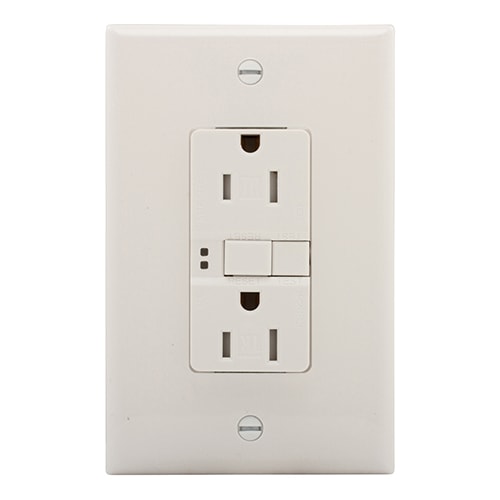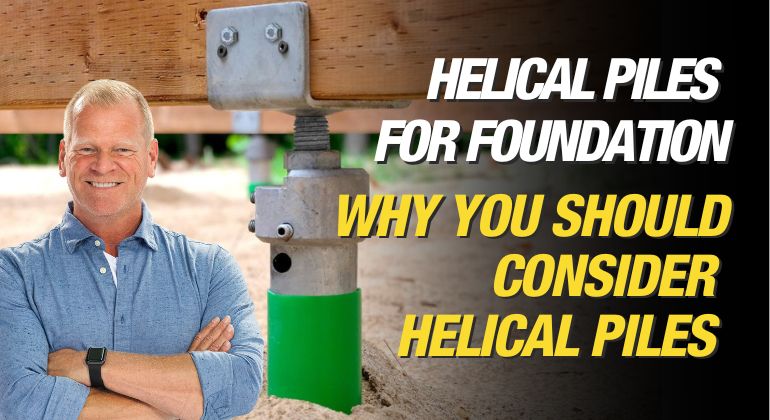Your gutters play a bigger role in protecting your home than most people realize. Be aware of these 9 signs your gutters were installed incorrectly. When they’re installed properly,...

Installing A Swimming Pool
By Mike Holmes
Mike’s Advice / Outdoor Renovations
Friday, June 15th, 2018 @ 2:08pm
What Should You Know Before Installing A Swimming Pool In Your Home
Installing a pool is an expensive project that will require ongoing maintenance, as well as extra utility costs and other expenses. Before jumping in with both feet it’s important that homeowners determine the real value of a swimming pool, and whether or not it makes sense to add one to their home.
Do Swimming Pools Increase Your Home’s Value
If you think a swimming pool will automatically increase the selling price of your home, think again. While pools are great for enjoying the weather and hosting parties, you will not see a financial return on your pool investment once you factor in all of the extra costs to maintain it. If you intend to stay at home and enjoy the pool for many years, take the plunge and consult with the experts. However, if you want to add value, this is not the project for you.
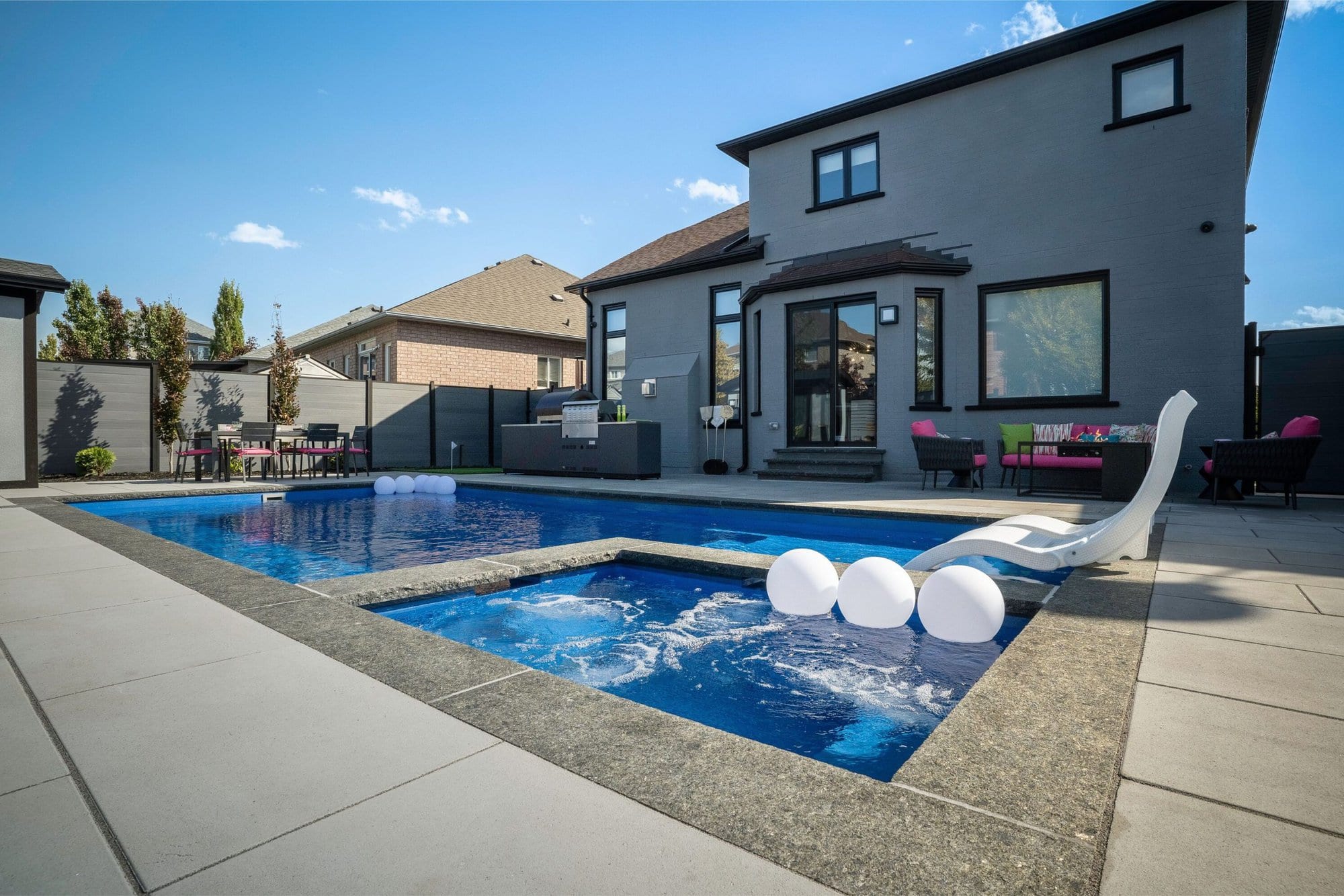
Photo from Holmes Family Rescue Season 2
Swimming pools require extra maintenance and expenses, including ongoing heating and possibly additional lighting. For budget-conscious homebuyers, a house with a swimming pool is often a hard sell.
If it’s a smart investment you’re after you will be better off spending your money on your home’s building envelope (see below for what that means), upgrading the electrical wiring or plumbing, finishing the basement, or renovating the kitchen. These are things that all homebuyers can appreciate, especially if they can help save them money in the long run.
What’s the Building Envelope?
A home’s building envelope is everything that separates (and protects) the interior environment from the exterior environment, which includes the roof, foundation, exterior walls, windows and doors. Upgrades and repairs made to the building envelope usually help reduce drafts, save energy, lower monthly heating and cooling costs, prevent moisture intrusion, and most importantly, protect the entire home.
The real value of a swimming pool is in how much it can improve your family’s everyday life – the longer you stay in the home the more value you will get from a swimming pool. Therefore, it’s an investment that only those homeowners planning on living in the same house should consider.
READ NEXT
What Are The Different Types Of Swimming Pools Available
When it comes to swimming pools, you have three options: fibreglass, concrete, or vinyl liner pools. Each has advantages and disadvantages that may influence your decision when it comes to material selection.
Now I have a concrete pool in my home and I love it. Concrete pools are tough and highly customizable which is a great option if you have a specific design in mind.

Different Types Of Swimming Pool Materials
However, let me tell you fibreglass pools are a great alternative with lots of advantages. They are more durable and have lower overall maintenance and costs. They’re also very simple to set up. You may be limited in terms of pool shape and size, so if you have a unique vision for your pool setup, you’ll need to consider something else. Having said that, fibreglass pools still come in a variety of styles, so if you do your research, chances are you’ll find one that suits your needs.
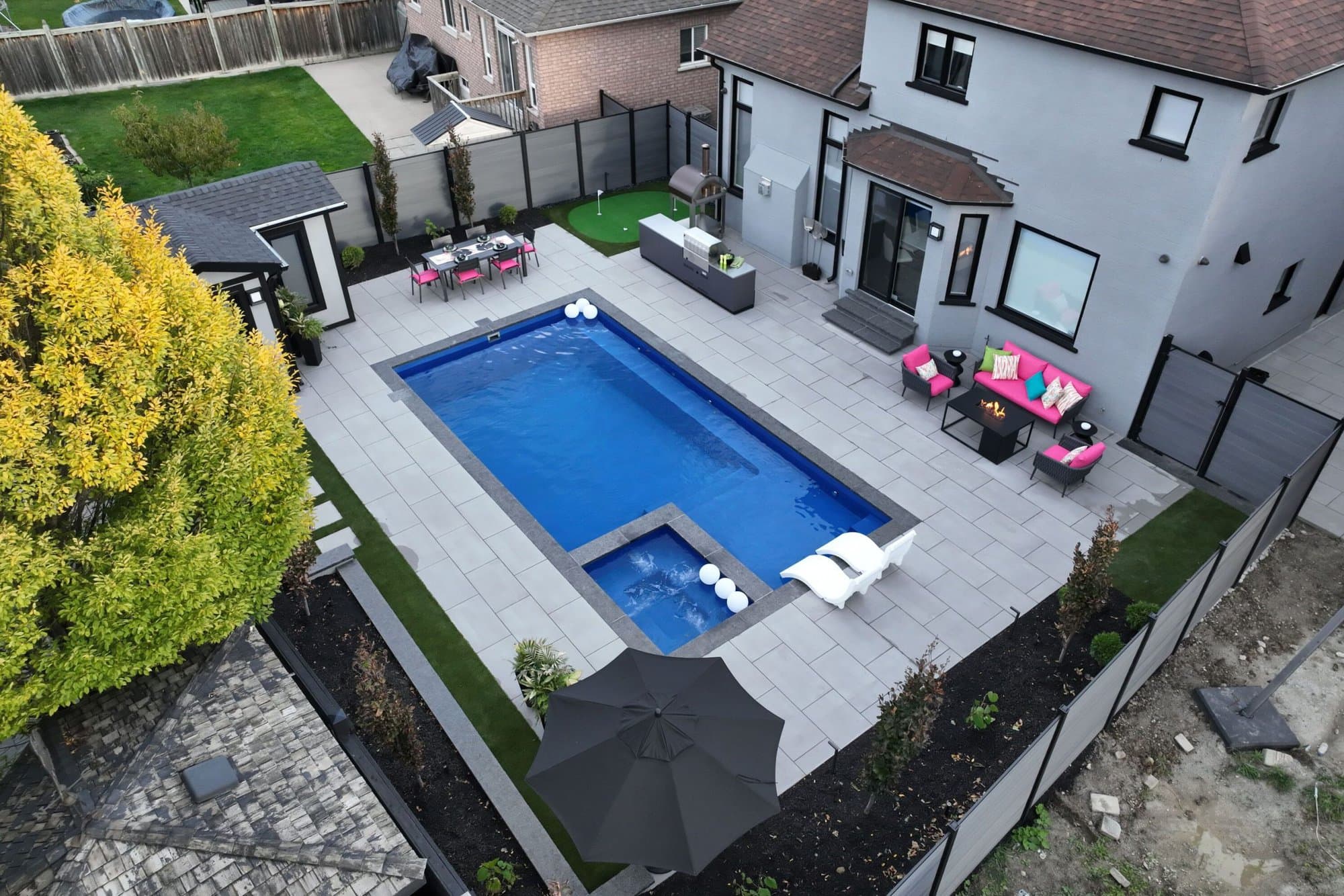
Photo from Holmes Family Rescue Season 2
What Are The Costs Of Installing A Pool?
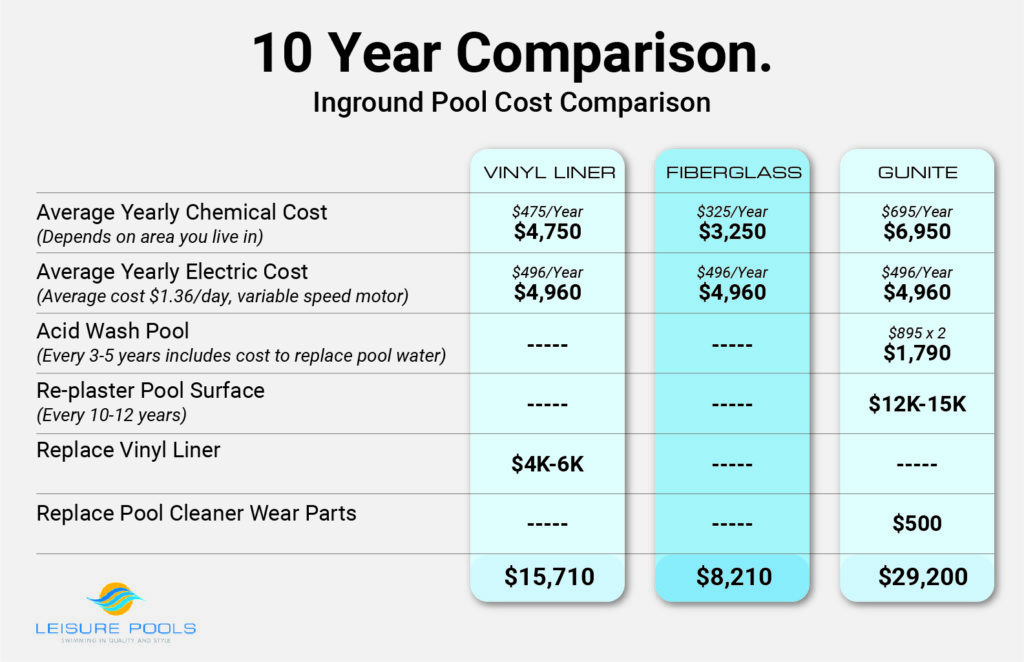
10-Year Cost Comparison on Swimming Pools
What Are The Electrical Requirements For Installing A Swimming Pool
When installing a pool, it is a good time to take a look at your electrical system. Your Licensed Electrical Contractor must ensure that any electrical source that powers your pool equipment or is within 1.5 metres of any metal objects, such as a pool ladder, is properly grounded and bonded. Otherwise, simply touching the bars of your metal pool ladder could be fatal!
You might also have powerlines running to your house above where you want your pool to be. This could cause an electrical shock hazard if they come into contact with pool tools such as skimmers. There are specific distances that your pool must be from these overhead wires in order to keep you and your family safe, which can be as much as 7.5 metres both horizontally and vertically.
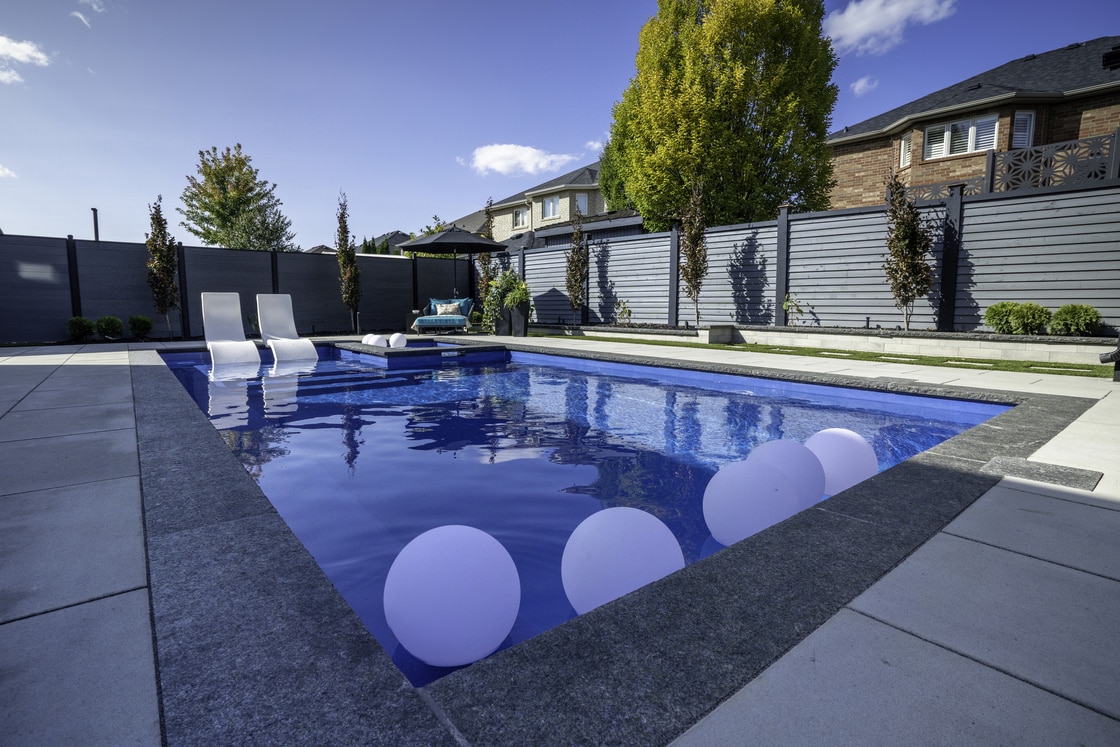
Photo from Holmes Family Rescue Season 2
Pro Tip
Hire an electrical contractor to review your pool’s specifications, your pool may require changes to your electrical system. To find a licensed electrical contractor near you visit: myhome.eaton.com or if you are in Ontario, Canada visit findacontractor.esasafe.com
Electrical Upgrades
Most new homes have 100-amp service, whereas older homes typically have as little as 60 amps. If you are considering installing a pool on your property there is a good chance that your home’s electrical will need to be upgraded to 200-amps. Make sure you speak to a licensed electrical contractor first to help you determine the electrical upgrades your home may require.
Installing GFCI Outlets In Your Outdoor Area
As we all know water and electricity can be a deadly combination. Ground-fault circuit-interrupters or GFCIs help protect us from electric shock when water is present. Be sure to hire a qualified electrical contractor when installing a pool, spa, or outside circuit. This is not only the safe solution but a requirement. All GFCIs should also have weatherproof covers to prevent moisture from getting in
I recommend installing GFCI outlets that can shut off the power to the electrical outlet as soon as an electrical fault is detected.
Loadcenter – Electrical Panel
A consideration many homeowners overlook when excited about their pool purchase is your electrical service coming into the home. Many homes may not have the proper amount of amperage coming into the home to support a pool installation and may not have the circuit space to support the installation. This is something that no homeowner wants to learn after their purchase.
What Should You Do Before Digging For A Pool
Whatever type of pool you choose, call Ontario One Call before you start digging to locate any utility-owned underground wires, gas lines, and water and waste water pipes. For any privately-owned underground infrastructure, such as the wiring to the shed, you’ll need to hire an underground locating service. If there are any underground wires, they must be kept one to six metres away from the pool’s walls.
How To Maintain Pool Liners
If your pool liner gets a leak call a swimming pool professional as soon as possible.
When a pool liner leaks the water will get in behind the lining and can start to rust the pool wall. In that case, the entire lining has to be removed and replaced. If the rust is bad enough, the entire pool wall will have to be ground and then pre-galvanized paint primer or rust-inhibiting paint is applied to protect the walls from future rust.
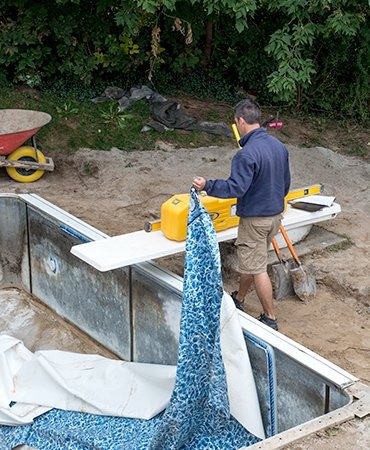
Swimming pool Construction. Pool Liner Installation.
Replacing a Pool Liner
Replacing a pool liner is usually a 2-4 week job – 3-4 weeks during peak season, which is spring and summer. If a pool’s liner needs replacing it’s best to get it done by October to prevent more damage caused by winter conditions. For example, freezing and thawing cycles can put enough pressure against the pool wall causing it to crack and fail even further.
What’s Coping?
Different professionals might have slightly different definitions, but pool coping is the cap on the pool’s edge or lip, which covers the concrete edge. Sometimes the track that the liner clips into is also part of the coping.
To replace a pool liner a professional swimming pool service provider will:
- Remove the old liner
- Check out the pool
- Make any necessary repairs
- Take measurements
- Send those off to the pool liner manufacturer because all pool liners are custom.
Before installing the new liner, final prep can include sweeping the pool. It also includes duct taping all seams in the pool around the skimmer and around the new coping, so it doesn’t protrude through the liner.
After the new liner is clipped in, a blower vacuums or sucks all the air in between the new liner and the pool wall out, which pulls the liner into place. Then the pool is filled with water and the weight of the water holds the liner in securely.
What Are The Different Pool Decking Materials
When it comes to pool deck materials there are plenty of options. Different materials include interlocking brick, cement, wood or an engineered wood product. A homeowner’s choice should be based on budget and maintenance. There are also new, innovative products being introduced that can be a very good solution for worn pool decks.
For example, Duraroc has a rubber surfacing material that is mould-resistant, and mildew-resistant and can go right over the coping or plastic lip of the pool. It can pretty much cover everything but bare metal.
Pro Tip
If you are replacing your pool liner it’s best to get all landscaping projects around the pool done before replacing it to avoid debris from falling in and possibly damaging the new liner. This also helps keep the pool clean and garbage-free!
After 24-48 hours, the product is completely solid and because it’s rubber, it moves with the concrete underneath it. This is great because you don’t have to worry about cracking. (Remember: concrete shifts and heaves thanks to freezing and thawing cycles.)
Swimming Pool Maintenance
The best time to start thinking about pool maintenance is at the end of the summer season. I recommend having a professional swimming pool service provider inspect the pool around the end of August or early September.
This gives you enough time to plan ahead and budget for any repairs your pool might need next year, rather than be blindsided by pool maintenance costs come next summer. This also gives you more options in terms of materials and scheduling.
READ NEXT
Swimming Pools 101 – What You Need to Know Before Adding a Pool to Your Home
